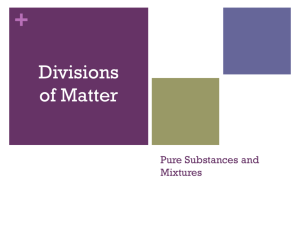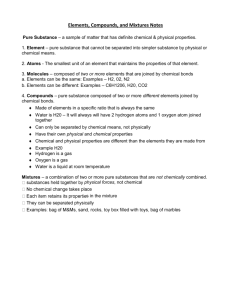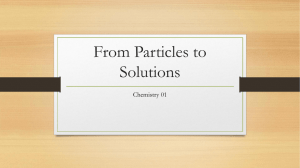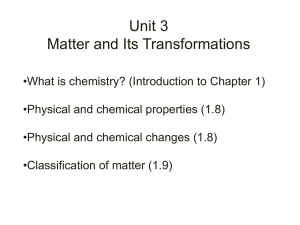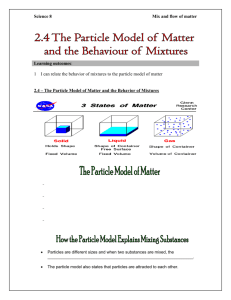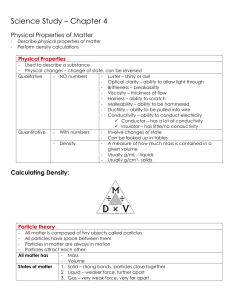Matter and Change, pp. 1-4
advertisement
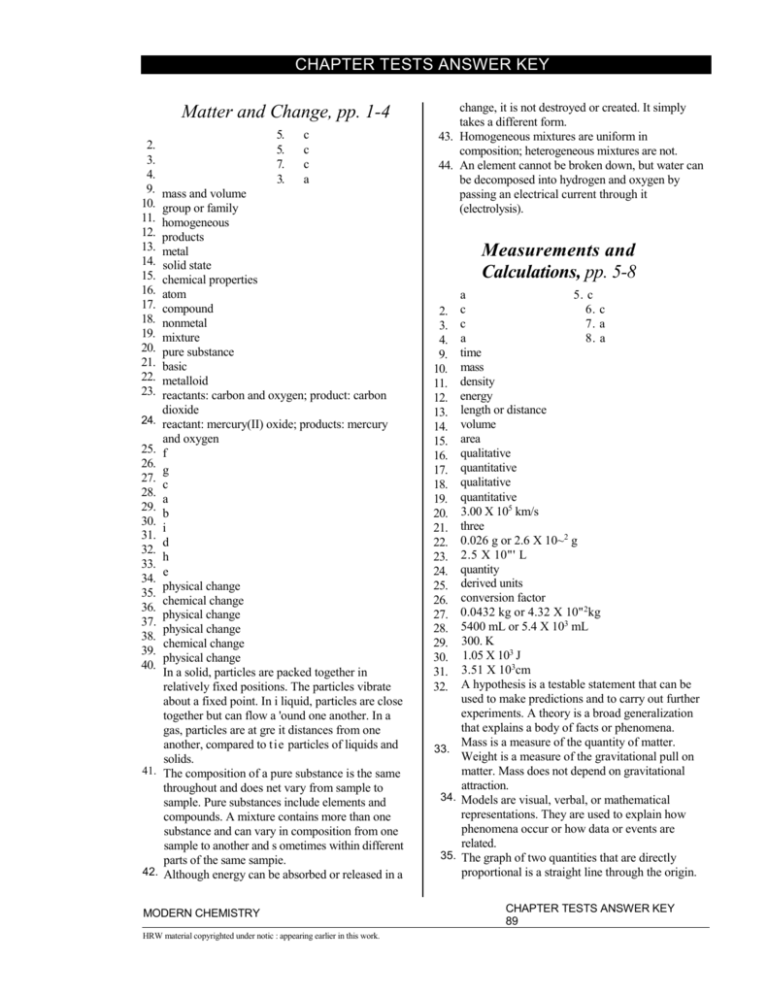
CHAPTER TESTS ANSWER KEY Matter and Change, pp. 1-4 2. 3. 4. 9. 10. 11. 12. 13. 14. 15. 16. 17. 18. 19. 20. 21. 22. 23. 24. 25. 26. 27. 28. 29. 30. 31. 32. 33. 34. 35. 36. 37. 38. 39. 40. 41. 42. 5. 5. 7. 3. c c c a mass and volume group or family homogeneous products metal solid state chemical properties atom compound nonmetal mixture pure substance basic metalloid reactants: carbon and oxygen; product: carbon dioxide reactant: mercury(II) oxide; products: mercury and oxygen f g c a b i d h e physical change chemical change physical change physical change chemical change physical change In a solid, particles are packed together in relatively fixed positions. The particles vibrate about a fixed point. In i liquid, particles are close together but can flow a 'ound one another. In a gas, particles are at gre it distances from one another, compared to tie particles of liquids and solids. The composition of a pure substance is the same throughout and does net vary from sample to sample. Pure substances include elements and compounds. A mixture contains more than one substance and can vary in composition from one sample to another and s ometimes within different parts of the same sampie. Although energy can be absorbed or released in a MODERN CHEMISTRY HRW material copyrighted under notic : appearing earlier in this work. change, it is not destroyed or created. It simply takes a different form. 43. Homogeneous mixtures are uniform in composition; heterogeneous mixtures are not. 44. An element cannot be broken down, but water can be decomposed into hydrogen and oxygen by passing an electrical current through it (electrolysis). Measurements and Calculations, pp. 5-8 a 5. c c 6. c c 7. a a 8. a time mass density energy length or distance volume area qualitative quantitative qualitative quantitative 3.00 X 105 km/s three 0.026 g or 2.6 X 10~2 g 2.5 X 10"' L quantity derived units conversion factor 0.0432 kg or 4.32 X 10" 2kg 5400 mL or 5.4 X 103 mL 300. K 1.05 X 103 J 3.51 X 103cm A hypothesis is a testable statement that can be used to make predictions and to carry out further experiments. A theory is a broad generalization that explains a body of facts or phenomena. Mass is a measure of the quantity of matter. 33. Weight is a measure of the gravitational pull on matter. Mass does not depend on gravitational attraction. 34. Models are visual, verbal, or mathematical representations. They are used to explain how phenomena occur or how data or events are related. 35. The graph of two quantities that are directly proportional is a straight line through the origin. 2. 3. 4. 9. 10. 11. 12. 13. 14. 15. 16. 17. 18. 19. 20. 21. 22. 23. 24. 25. 26. 27. 28. 29. 30. 31. 32. CHAPTER TESTS ANSWER KEY 89


